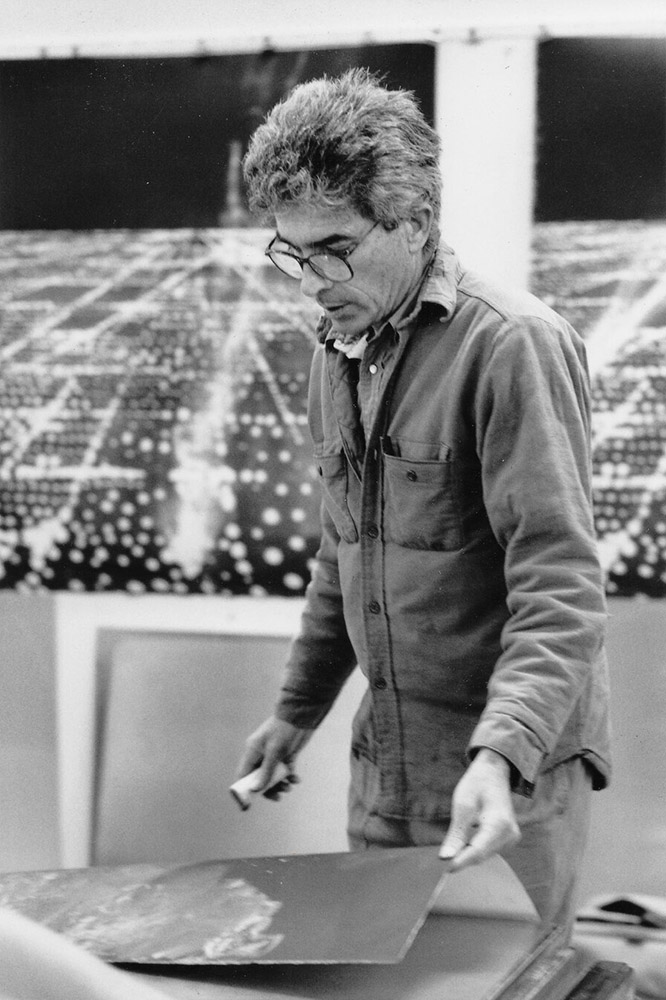BIOGRAPHY
Peter Alexander (American, b.1939) is a painter and sculptor best known for the resin sculptures he created in the 1960s and 1970s. He was born in Los Angeles, CA, and he studied at the University of Pennsylvania from 1957 to 1969, Architectural Association in England from 1960 to 1962, University of California at Berkeley from 1962 to 1963, University of Southern California from 1963 to 1964, and University of California at Los Angeles from 1964 to 1966, where he received both his BFA and MFA.
Alexander started as an architect, and developed a reputation in the 1960s for creating translucent resin sculptures. He is also a prolific painter who has focused on landscape views of the lights of Los Angeles, as well as murals. In addition, he enjoys fame outside of the art world, with his work appearing in movies such as Erin Brockovitch, Terminator 3, and Shopgirl. Alexander was commissioned to paint a mural for the Walt Disney Concert Hall in Los Angeles, and he was awarded a Fellowship of the National Endowment for the Arts in 1980. His work has been seen in Fogg Art Museum in Massachusetts, the Getty Museum in California, the Minneapolis Institute of Contemporary Art in Minnesota, the Museum of Contemporary Art in Hawaii, and many other museums and galleries across the United States. Some of his more famous works include Flo Line Drip, Beto, and Violet Black Edge.
Alexander’s colorful and emotion-filled paintings are in stark contrast to the resin sculptures that made him famous. Where his paintings have fluidity, the sculptures are roughly hewn and filled with sharp corners and straight lines. He employs unique colors to his resin sculptures, giving them a haunting beauty underneath the geometric patterns. He was a member of the Light and Space movement of the 1960s, which was based in California. This movement combined Op Art, Minimalism, and Geometric Abstraction. It is characterized by a focus on perceptual phenomena such as scale, volume, and light. This heavily influenced his work during the 1960s and 1970s.

